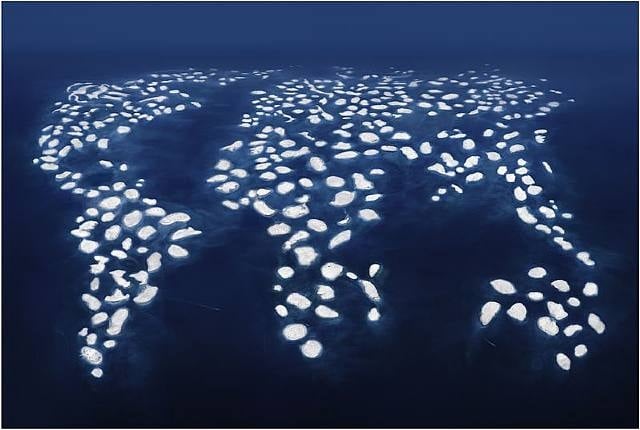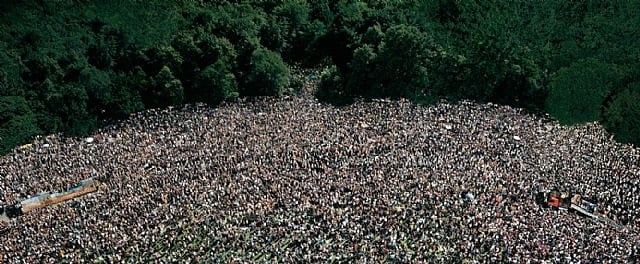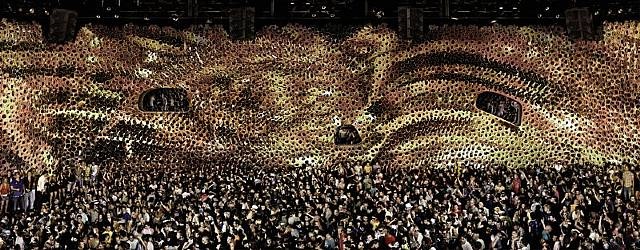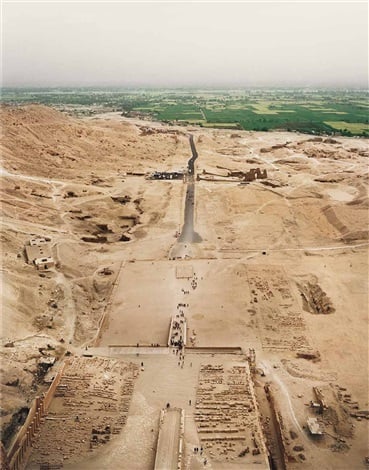People
How Does Andreas Gursky Turn His Expansive Photos into Massive Auction Results?
Gursky created the second and fifth highest-selling photographs of all time.

Photo: courtesy White Cube
Gursky created the second and fifth highest-selling photographs of all time.

Amah-Rose Abrams

Photographer Andreas Gursky’s epoch-defining images of modern society have made him one of the highest-priced photographers of our times.
Gursky, who grew up in West Germany after his family relocated from the East when he was a child, studied art at the Folkwang School for the Arts in from 1978–1981, and then at the Dusseldorf Art Academy from 1981–1987. It was at Dusseldorf that Gursky was taught by celebrated conceptual photographers Bernd and Hilla Becher. He was impressed by their systematic, somewhat dispassionate approach to photography and, along with the photojournalist training he received at Folkwang, their influence remained evident through his career.
In the early 1990s, Gursky—already represented by White Cube—began incorporating digital technology into his work. He broadened the literal boundaries of his images to create impossibly expansive views and, in doing so, created some of his most striking, famous works.

Andreas Gursky Love Parade (2001)
Photo: courtesy Sprüth Magers
The use of digital tools to manipulate and enhance his vision transformed Gurksy from an already successful photographer to an artist with huge international following and one of the world’s most sought-after image-makers.
His early works, such as Gas Cooker (1980), took an everyday object and emphasized a certain physical attribute to the point of abstraction.
“My earlier work, the photograph of the gas cooker, is based on visual experience,” Gursky told Foto8 in 2009. “It was my gas cooker and I was cooking with it; and then after a while I saw it as an image. This was how I worked earlier in my career. There are more examples; for instance, the abstract photographs—including the grey carpet and the street scene at night—are bizarre pictures, which are based on the fact that, just by chance, I would see the structure for a photograph.”
As Gursky’s work developed, he began to see these structures in larger and larger subjects, like landscapes, cityscapes, and crowds. He would elevate himself to dizzying heights to capture these scenes, lending the viewer a bird’s-eye view. At that distance people and landscapes began to take on a very different visual quality, creating mesmorzing shapes and patterns which Gurksy’s exploited to create striking images, all while offering a comment on society and the human condition.

Andreas Gursky Cocoon II (2008)
Photo: courtesy White Cube
“Space is very important for me but in a more abstract way, I think,” Gorky told Canadian Art in 2009. “Maybe to try to understand not just that we are living in a certain building or in a certain location, but to become aware that we are living on a planet that is going at enormous speed through the universe. For me it’s more a synonym. I read a picture not for what’s really going on there, I read it more for what is going on in our world generally.”
During the 1990s, Gursky—an infamous fan of Trance and Techno music—photographed a variety of huge, swarming groups of people such as ravers at large music events, the Kuwait stock exchange, and massive military formations in North Korea. For viewers of Gursky’s finished works, these pictures can be viewed multiple ways: at a distance, which can provide an objective overview or abstract series of shapes, and close up, where single figures can be seen as actual individual that contribute to the greater whole.

Andreas Gursky Theben West (1993)
Photo: courtesy Mai 36 Galerie
Gursky has exhibited all over the world, including at institutions such as Tate Liverpool in 1995, The Serpentine in 1999, and a travelling survey which started at MoMA in 2001 before going to the Reina Sofia in Madrid, the Centre Pomidou in Paris, and the National Art Centre in Tokyo. His work began to garner not only huge public appeal, but also a seriously lofty price tag at auction.
In 2007, his digitally altered photograph of a discount store depicting unending row upon row of products, titled 99 Cent II Diptychon (2001), sold at auction at Sotheby’s London for $3,346,456, breaking the record for the number one highest-priced photograph of all time. Today, it now sits at number five, with Gursky’s unedited landscape Rein II (1999) occupying the number two slot. Gursky had briefly retrieved the highest-priced photograph title in 2011 after fetching $4,338,500 at Christie’s New York, only to lose it once again in 2014 to Peter Lik’s eerie work Phantom (2014), which Lik sold from his own gallery in Los Angeles for $6,500,000.
At 60 years old, Gursky has plenty of time to continue his practice and reclaim the title. His work only seems to increase in popularity, so it can’t be too long before we see him breaking auction records again.